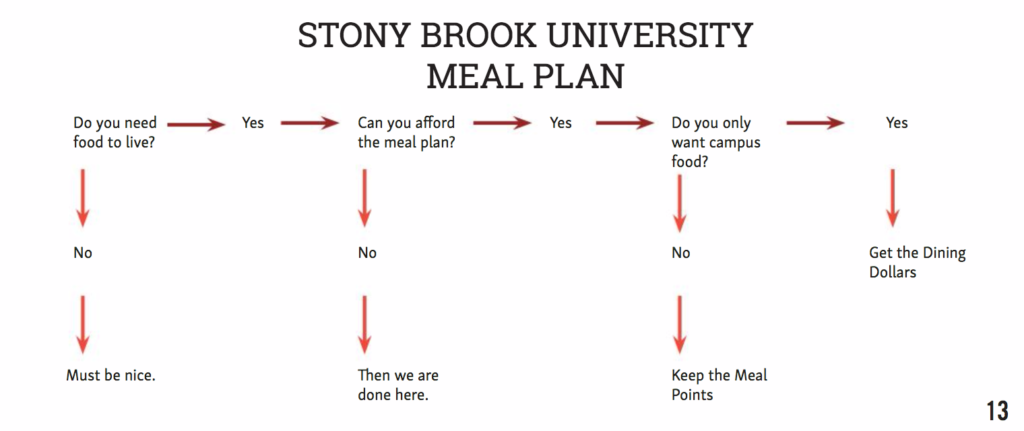With major changes to the meal plan system going into effect this semester, choosing the meal plan you want has become more difficult than expected.
There are 10 different meal plan options with 10 different prices for returning resident students to select from as well as five different options for first-year resident students and three options for commuter and apartment students. Obviously this system is a bit complicated.
Exhausting your meal points before finals, though, will no longer be a semesterly worry for students because of the changeover to a numerical or unlimited amount of meal swipes per week at Dine-in locations, which can be found at West Side Dining, Union Commons, Roth Café and East Side Dining at Toll Drive(when it opens).
That’s definitely a relief? Although you can still run out of meal swipes for a given week if your plan only allows for seven or ten meals, at least you don’t screw yourself over for the rest of the semester.
Your meal plan option also may or may not include dining dollars: the second half of the dynamic duo of Stony Brook dining currencies. These are mainly for the use of retail locations on campus, found in all the same facilities as Dine-in locations plus Tabler Café, Jasmine, Jamba Juice and Sandella’s Flatbread Café.
Dining Dollars can also be used for the door price at Dine-in locations, so they also serve as a safety account in case you run out of meal swipes that week.
Choosing the right combination of meal swipes and dining dollars really depends on which food/drink options you typically purchase. Coffee drinkers, for example, may make more purchases at retail locations, like the two Starbucks on campus or the Dunkin Donuts in Tabler. A student who enjoys a greater variety of international cuisine may also use more Dining Dollars since there are even more of those dining options available at Retail locations.
Plenty of universities use similar systems involving Dining Dollars (or something equivalent) supplementary to a meal-swipe buffet type of thing. Stony Brook University is not the first to do something like this.
But some of the other universities’ systems are more consumer-friendly. It seems pretty clear that implementing dining dollars at Stony Brook was a monetarily incentivized idea.
One Dining Dollar is equal to $1. That is also apparent when comparing meal plans with and without Dining Dollars included: Unlimited Meals with 0 Dining Dollars costs $2,400 while Unlimited Meals with 500 Dining Dollars costs $2,900.
Meal plans that only consist of Dining Dollars include either an administrative fee or a hefty operating expense, meaning that you are actually paying more than $1 per Dining Dollar on those plans. Personally, I’m not around for something like that.
Other universities have percentage discounts with the purchase of Dining Dollars or the appropriate equivalent name. Pennsylvania State University, for example, grants a 10 percent discount, and North Carolina State University has a 5 percent discount.
So what is the difference between a Dining Dollar at Stony Brook and regular money? Put simply, Dining Dollars are regular dollars that can only be spent on campus. This is exactly why I call them “Stanley Dollars.”
What makes this system possible isn’t reasonable consumer incentive, but the parents. They would rather purchase such a restrictive meal plan than hand their child money or a debit account so they can control what he or she buys. The parents then know that money is only being spent on food and drinks.
But if you trust your son or daughter enough, he or she can purchase food/drink items at off-campus vendors that are within walking distance or offer delivery, which are most likely less expensive than the on-campus equivalent options.
I would suggest steering clear of Stanley Dollars so you have the liberty of spending that money elsewhere if you want to.
Fear not if you are unsatisfied with your current meal plan option after reading this: You are able to change meal plans during the first three weeks of the semester.




Comments are closed.